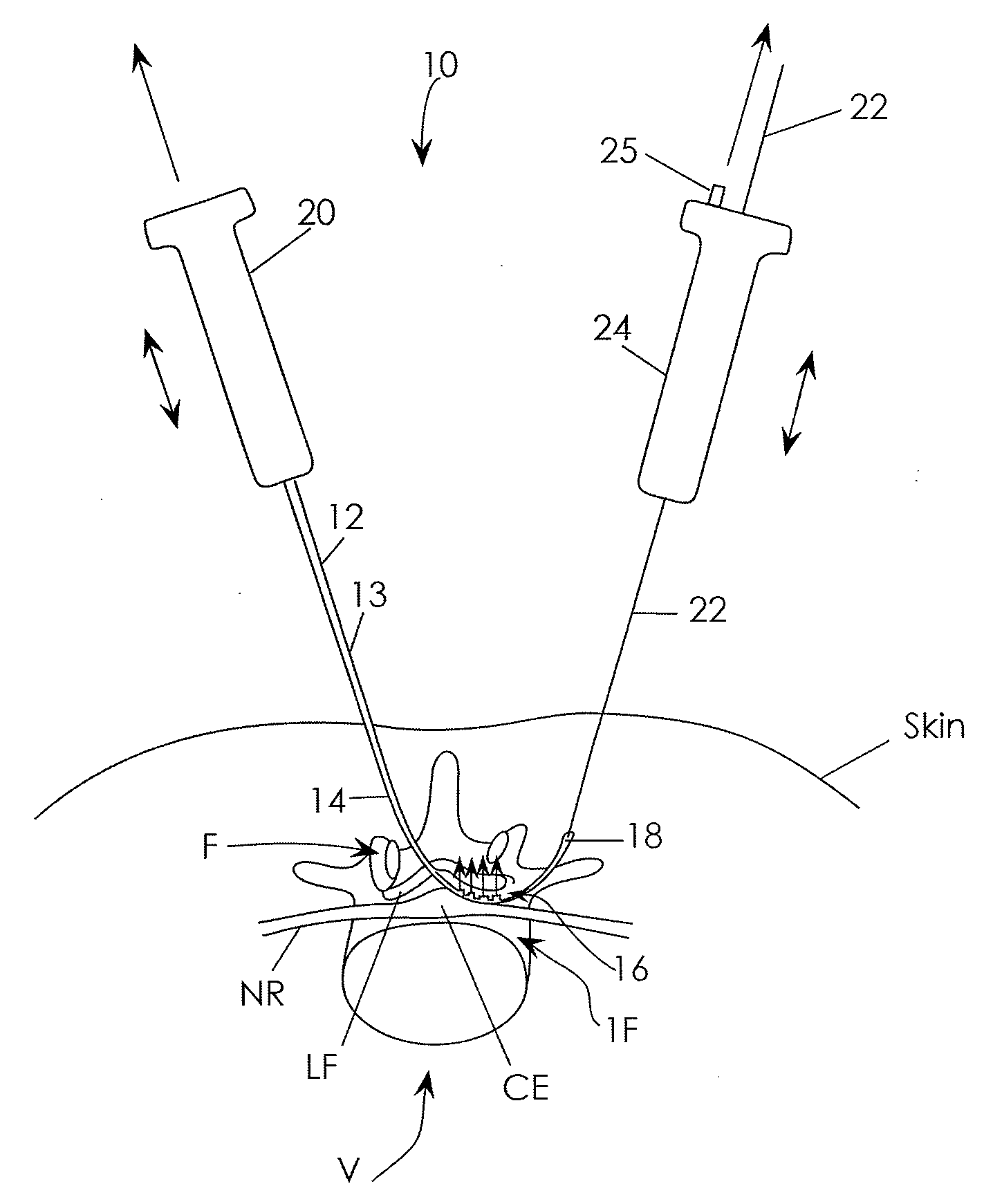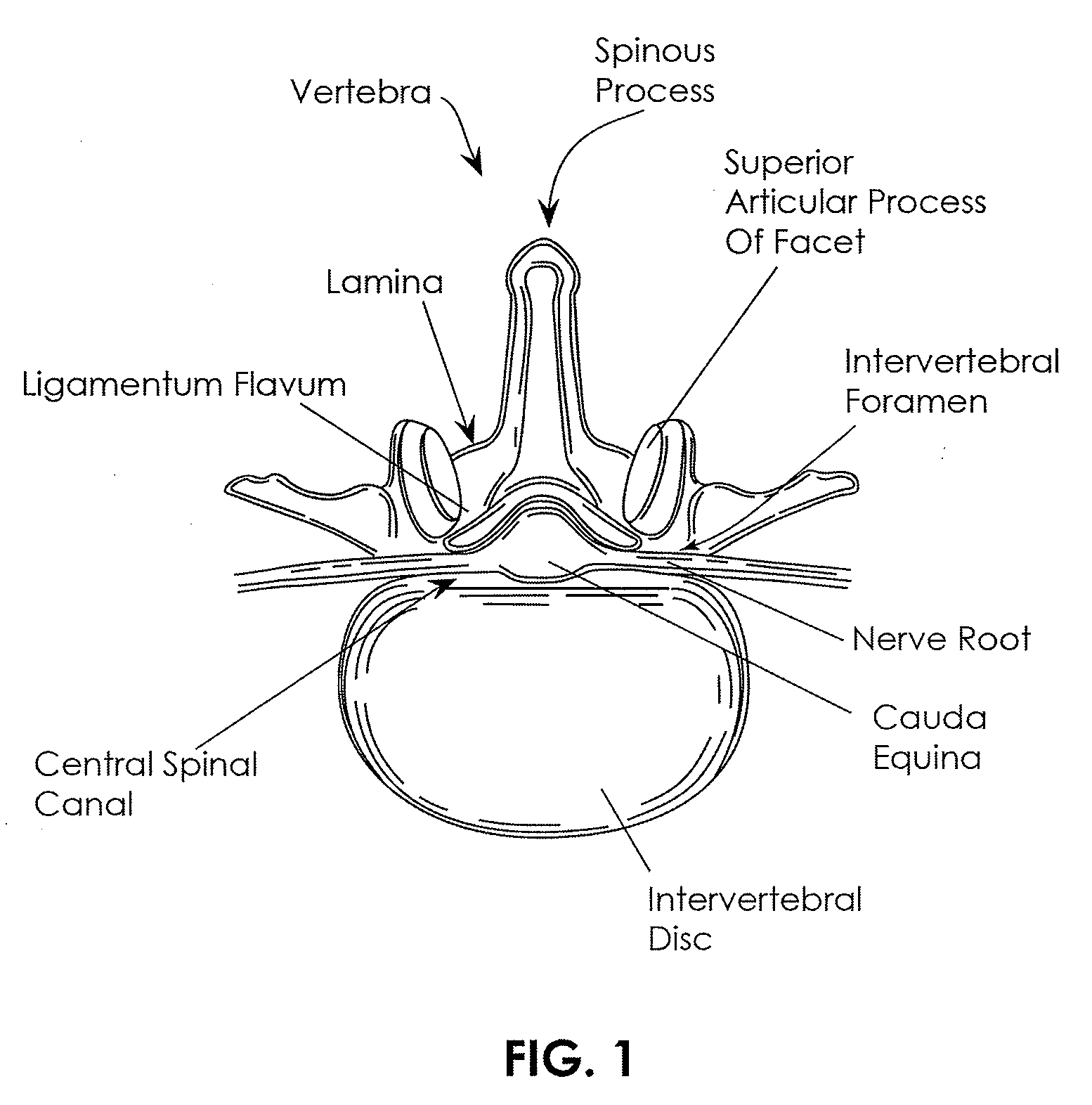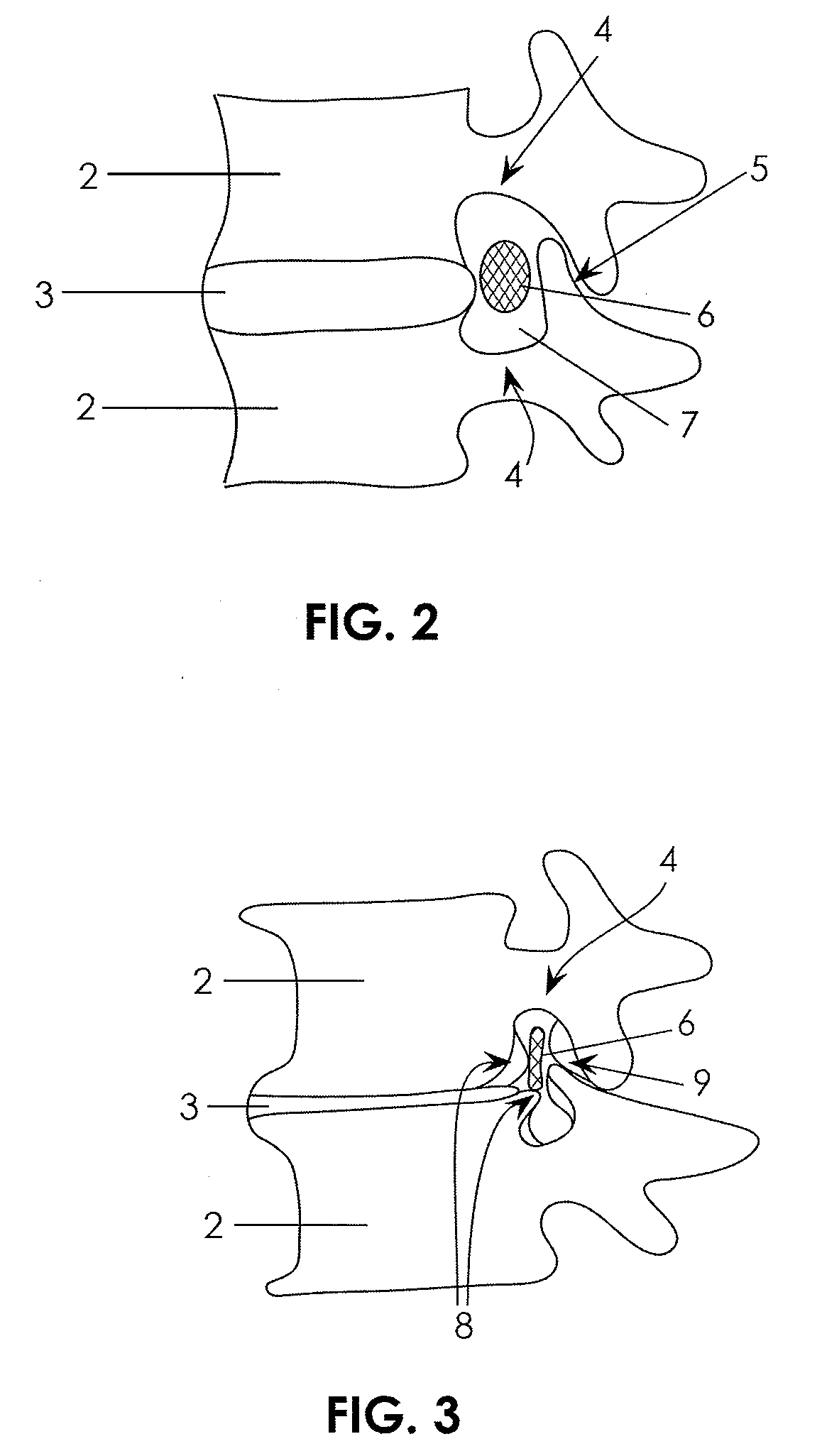Devices and methods for measuring the space around a nerve root
- Summary
- Abstract
- Description
- Claims
- Application Information
AI Technical Summary
Benefits of technology
Problems solved by technology
Method used
Image
Examples
Embodiment Construction
[0072]The present invention is directed primarily to medical / surgical devices, systems and methods for measuring the compliant region adjacent to a nerve root before, during and / or after a spine tissue removal procedure (or “decompression procedure”) of a constricted region surrounding the nerve root (e.g., within an intervertebral foramina, spinal canal and / or lateral recess). The devices, methods and systems described herein may be used with any appropriate spinal treatment, including those described in: U.S. patent application Ser. No.: 11 / 251,205, entitled “Devices and Methods for Tissue Access,” and filed Oct. 15, 2005; U.S. patent application Ser. No.: 11 / 457,416, entitled “Spinal Access and Neural Localization,” and filed Jul. 13, 2006; U.S. patent application Ser. No.: 11 / 468,247, entitled “Tissue Access Guidewire System and Method,” and filed Aug. 29, 2006; U.S. patent application Ser. No.: 11 / 251,165, entitled “Devices and Methods for Tissue Modification,” and filed Oct. 1...
PUM
 Login to View More
Login to View More Abstract
Description
Claims
Application Information
 Login to View More
Login to View More - R&D
- Intellectual Property
- Life Sciences
- Materials
- Tech Scout
- Unparalleled Data Quality
- Higher Quality Content
- 60% Fewer Hallucinations
Browse by: Latest US Patents, China's latest patents, Technical Efficacy Thesaurus, Application Domain, Technology Topic, Popular Technical Reports.
© 2025 PatSnap. All rights reserved.Legal|Privacy policy|Modern Slavery Act Transparency Statement|Sitemap|About US| Contact US: help@patsnap.com



